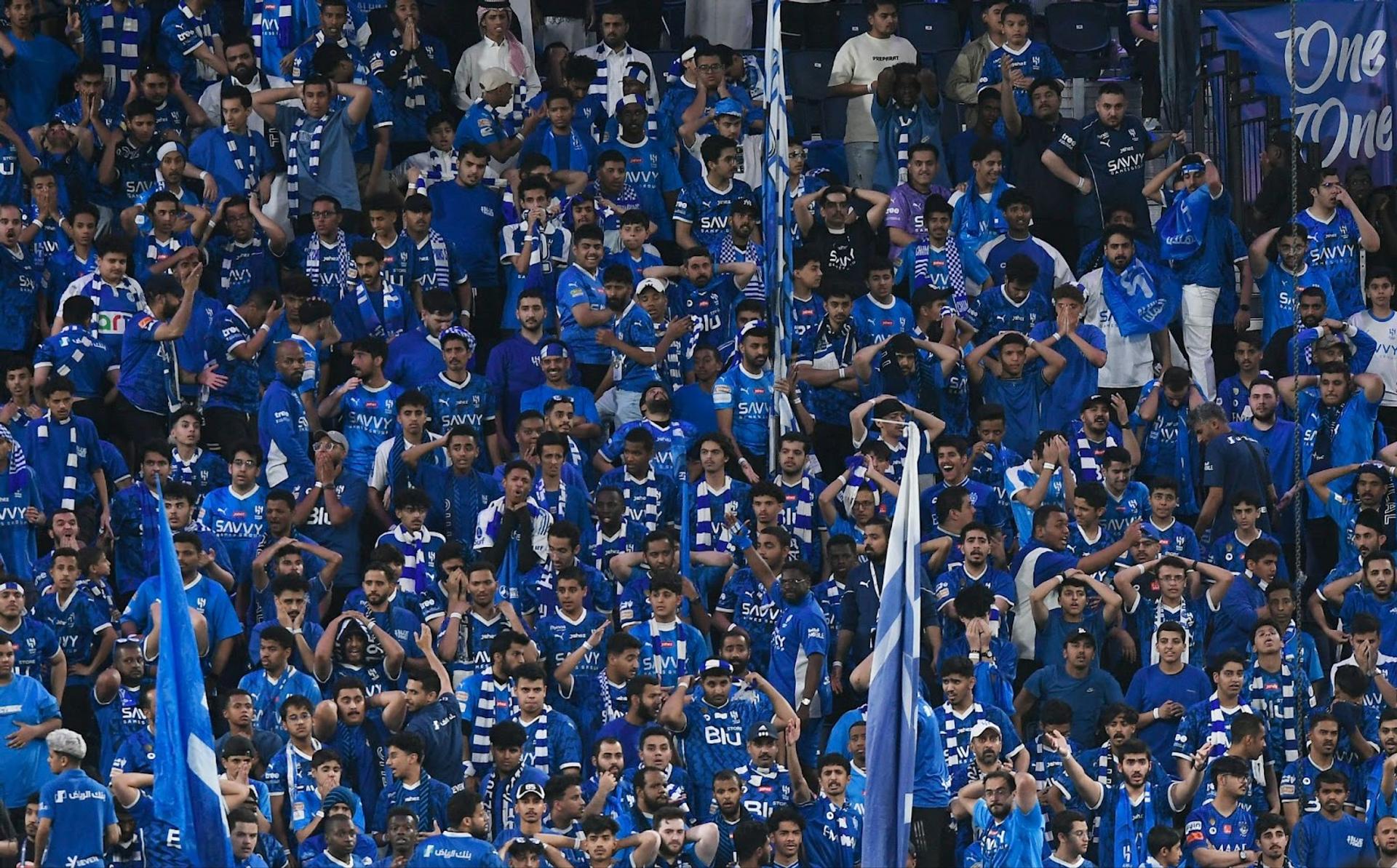Camilla’s view
In football (soccer, to some), Saudi Arabia’s influence is largely confined to its ownership — via its sovereign wealth fund — of Newcastle United. The British club’s Carabao Cup win last month was labeled a victory for Saudi by the UK press. But few fans in the kingdom adopted the triumph: There’s so much football going on inside Saudi that the league has its own Netflix series.
If you’ve never been to a Saudi Pro League (SPL) game, then the Capital Derby between Al-Hilal and Al-Nassr is a must, if you can get a ticket: Hilal’s own club app Blu sells out fast, so fans resort to resale site Grintahub. In a recent match, Nassr star striker Cristiano Ronaldo’s brace of goals secured the win. His post on X — “Riyadh is yellow and blue” — to 115 million followers keeps the league in a global spotlight.
It was fitting that Ronaldo was the matchwinner. The original catalyst for the Saudi football project at the start of 2023, the most followed celebrity on social media stunned the world by leaving Manchester United for Riyadh. (A reported $200 million annual paycheck helped). That summer the Public Investment Fund (PIF) took 75% stakes in four local clubs — Al-Ahli, Al-Ittihad, Al-Hilal, and Al-Nassr — and injected billions to attract superstars. The investment was part of a broader plan to build a sports sector that ultimately contributes $16.5 billion a year to GDP, or 1.5% of the total economy, by 2030, almost triple its size in 2020.
In many ways, the SPL mirrors Saudi Vision 2030: launched with bold ambition and flashy marketing, then followed by a phase of retrenchment and refocusing to rein in costs while building sustainable physical — and cultural — infrastructure. While some may dismiss the effort as “sportswashing,” the SPL will ultimately be judged on its ability to build a domestic audience, create jobs, and develop local football talent.
At the time, big clubs lined up to offload their fading, overpaid stars. But after that first heady billion-dollar transfer window, European sides found the doors slammed shut. The SPL playbook had changed, seemingly overnight.
In 2024 the average age of a SPL player was 28: old for a major league. This season’s transfer spend was only half the previous one (although still $500 million), focusing on younger signings, with an average age of 24.
The way the SPL works is different to most leagues — the PIF-owned clubs are resourced through a central committee, so it’s easier to change strategy. PIF brought in consultants who had worked in China, India, and the US to advise. More attention was given to infrastructure, growing fan communities, economic stability, and transfer strategy.

After its initial splash, insiders say expectations for the league are more realistic — there’s hope standards will rise to be comparable to, say, the Dutch league. Fears that the project could sputter out, like in China, abated when the kingdom was awarded the 2034 men’s soccer World Cup, a prize that eluded Xi Jinping.
And quality is improving. The SPL provides three of the Asian Champions League quarter finalists. Jeddah is hosting this year’s ACL. A new mini tournament will be held April 25 to May 3; an early dress rehearsal for the World Cup.
The SPL, also like aspects of Saudi Arabia’s transformation, is imbalanced. Most spending has been directed to PIF-backed clubs, but the league comprises 18 teams. Al-Ittihad, the league leaders, play in front of average crowds of 36,000 in a world-class 60,000-plus stadium. Al Fayeh attracts 1,500 in a 7,000-seat stadium. More money is coming in to solve this problem.
But while having centralized resourcing helps macro strategy, it definitely fuels gossip. You know something is brewing when everyone’s favorite football conspiracy theorist, Jose Mourinho gets involved. His interjection last season ratcheted social media chatter on VAR sky high: “If you are a referee in a dark room with some screens, you know how to do it. One frame more, or less — is an offside, is not an offside — is a goal, is not a goal... So if you support Al-Ittihad, one frame more — if you support Al-Ahli, one frame less.”
Social media rumor posits that every season, one PIF team is favored. Titleholders Al-Hilal drew last year’s game at Al-Nassr thanks to a controversial VAR penalty in the 10th minute of added time, causing scandalized headlines around the world. This year Al-Ittihad has gained unlikely points from stoppage-time goals, to keep them top. So much heat has been generated that, taking a leaf out of European fan groups’ handbooks, there’s even a fan-led campaign to write to club execs protesting the league’s inequities.
And yet, if the optics don’t get too bad, this steady drumbeat of controversy is good for business: An outrage content-generation machine which holds its own against other entertainment mirrors football culture across the world.
Now all the SPL needs to do is produce enough home-grown players for Saudi Arabia to show up in a successful home World Cup, and the project will have succeeded.
Camilla Wright is a media commentator and writer for global news and pop culture outlets, and publishes Britain’s biggest and best known newsletter.

